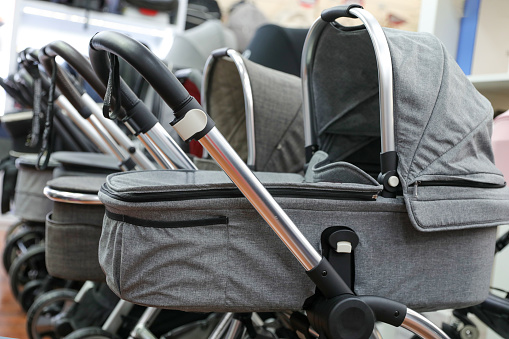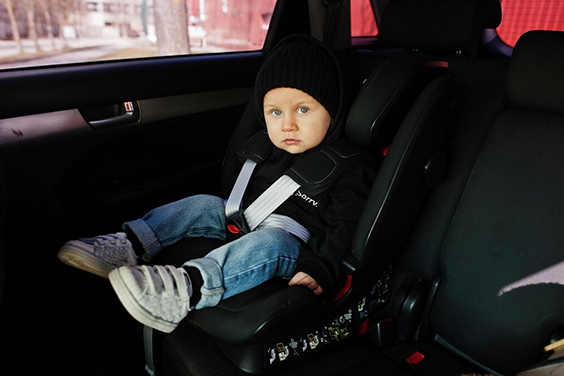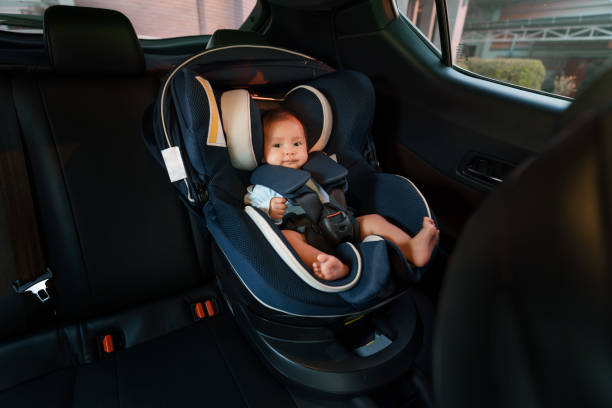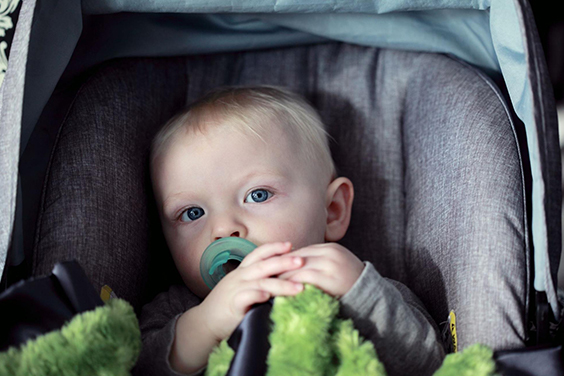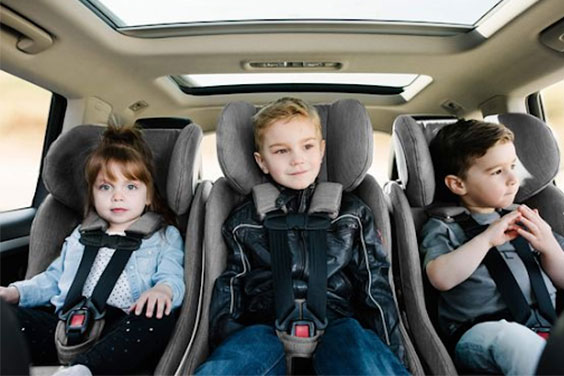Knowing the right time when to move your baby to crib from the bassinet might seem like a daunting task for many new parents. Recognizing the signs that your baby is ready for this big change can ease the process.
How to Determine When to Move Baby to Crib?
Generally, most parents switch their baby from the bassinet to crib when they start to roll over, push up on their hands more frequently or sit up, typically around the 3 to 5 months of age mark. This is because a bassinet’s smaller, cozier structure isn’t built to accommodate a baby’s newfound movement, so there’s a suffocation hazard. While this age range is a commonly seen average, it might not be the right time for transitioning your baby yet. They may show signs that they are ready before or after this window.
Observe sleeping habits
Learn to observe your newborn’s sleeping habits carefully. The American Academy of Pediatrics (AAP) recommends taking note of signs such as frequent middle of the night wakings and extended nighttime feedings. These could be interruptive to your baby’s sleep routine, indicating that it might be time for a transition. Babies need consistency in their sleeping environment to ensure quality sleep, and the crib provides babies sleep a larger, more consistent sleep space for their growing needs. Longer stretches of sleep also suggest that your baby’s weight is ready for their new crib.
Weight limit
Another fundamental factor that new parents need to consider is the bassinet’s weight limit. If your baby has reached or exceeded the weight capacity for the bassinet, it’s the right time to make the transition. Remember, safety is paramount. Therefore many parents, it’s better to be proactive than reactive and make the crib transition before your baby starts rolling over or sitting up in their bassinet.
When is the Best Time to Move Baby to Crib?
Deciding on when to move baby to crib can seem challenging but understanding when it’s the best time for the transition can significantly ease anxiety associated with this parenting milestone. As per both pediatricians and the American Academy of Pediatrics, the best time to move your baby from a bassinet to a crib is between 3 and 5 months of age. During this time, a baby’s sleeping pattern transitions from stage to cycle-based sleep and becomes more regulated, indicating readiness for younger baby to move to their own crib in their own space in the nursery.
However many babies have, timing also depends on your baby’s developmental stages. If your baby has started to roll over or seems cramped in the bassinet, it might be time to transition them to their new bed. Remember, no two babies are the same. This transition depends on each baby’s unique growth spurts and development.
The best crib for your baby is a size-appropriate crib ready one that allows for maximum comfort while sleeping. Crib sheets should be snug fitting and the mattress, firm for your child’s safety. Meeting these requirements sets the foundation for better sleep training further down the line.
An essential part of knowing the right time for crib transition also involves observation of your baby’s nighttime sleep schedule. Are they able to sleep longer stretches at night without being disturbed by a cramped bassinet? If so, that’s another positive indicator that it could well be time for a switch from the bassinet to crib.
| Key Considerations | Details |
| Best Time to Move Baby to Crib | According to pediatricians and the American Academy of Pediatrics, the best time is between 3 and 5 months of age. |
| Sleeping Pattern Transition | During this time, a baby’s sleeping pattern transitions from stage to cycle-based sleep and becomes more regulated. |
| Dependence on Baby’s Developmental Stages | If your baby has started to roll over or seems cramped in the bassinet, it might be time to transition them to their new bed. |
| Individual Differences | No two babies are the same. This transition depends on each baby’s unique growth spurts and development. |
| Crib Requirements | The best crib for your baby is a size-appropriate one that allows for maximum comfort while sleeping. Crib sheets should be snug fitting and the mattress, firm for your child’s safety. |
| Observation of Baby’s Nighttime Sleep Schedule | An essential part of knowing the right time for crib transition also involves observation of your baby’s nighttime sleep schedule. If they are able to sleep longer stretches at night without being disturbed by a cramped bassinet, it’s another positive indicator that it could well be time for a switch from the bassinet to crib. |
What Are the Safety Precautions to Consider During the Crib Transition?
Ensuring a safe transition from the bassinet to crib is a fundamental aspect of newborn parenting. The American Academy of Pediatrics emphasizes the importance of creating a safe sleep environment to minimize the risk of SIDS (Sudden Infant Death Syndrome).
- Choose a crib that meets the safety standards set by the Consumer Product Safety Commission (CPSC). The crib mattress should be a firm mattress that snugly fits into the crib frame thus reducing any suffocation hazard. Any gap between the soft mattress and crib sides can pose a danger, as your baby could get trapped in that space. For bedding, use fitted crib sheets that won’t get loose and entangle your baby.
- Avoid putting toys, pillows, blankets, or bumper pads in the crib since they increase the chances of suffocation. The experts’ consensus is to keep the crib as clean and bare as possible, thereby making it the safest sleeping space for your baby.
- It’s preferable to place the crib in the nursery, or parents room, ideally situated away from windows, blinds, draperies, or any household objects that your baby could grab onto. Ensure the crib isn’t close to any furniture that the baby could eventually reach as they grow.
- Try to maintain a comfortable temperature in the nursery, typically between 68 and 72 degrees Fahrenheit, conducive for your toddler’s sleep. Using a baby monitor can also provide peace of mind, enabling you to keep a close watch on the baby during their bedtime and nap times in the new crib.
Make the Crib More Comfortable for Baby During the Transition: What to Do
Getting your baby to sleep in the crib for the first night can feel like an uphill task. However, there are techniques to make sleeping arrangements the crib more comfortable for your baby and smoothen the transition.
Start by introducing your baby to the crib during the daytime. Allow your newborn to have their nap in the crib. This familiarization process instills association between the crib and sleeping. The crib, just like the bassinet, should become synonymous with bedtime and nap time for most babies.
Swaddling your newborn before putting them to sleep in the crib can recreate the comfortable confines of a bassinet. However, cease swaddling if your baby is able to roll over. Using a sleep sack can also provide a similar snug feeling while ensuring that your baby feel secure and there are no loose items in the crib.
Consistency is key when trying to make the crib a comfortable sleep space. Make sure that your baby’s room has a set routine for sleep. A consistent sleep schedule, combined with a bedtime routine like a warm bath or a feeding, signals to your baby the arrival of bedtime or nap time.
A Step by Step Guide: How to Gradually Transition Baby to Crib
Transitioning from bassinet to crib can be eased by following a gradual step-by-step process. Below is a guide to help ensure a smooth transition:
- Start the crib easier with naps: Begin by having your baby take naps in their own room without the crib. This allows them to get used to the new sleeping environment gradually. Place the crib in the same room where your baby is used to sleeping to create a familiar setting.
- Create a comfortable environment: Make the bedside sleeper crib as comfortable as possible by using a firm mattress, fitted sheet, and a familiar blanket or sleep sack. You can also try using a crib wedge or rolled-up towel under the mattress to create a slight incline, which can help with reflux or congestion.
- Sleep with crib bedding: For a night or two, sleep with the crib sheet or put it under your pillow to transfer your scent onto it. This can provide a sense of comfort and familiarity for your baby when they sleep in the crib.
- Gradual transition: After your baby becomes accustomed to napping in the crib, start transitioning them to sleep in the crib at night as well. Begin by putting them to sleep in the crib for a few nights during the first part of the night, such as after the baby monitors first nighttime feeding.
- Stay close transition your baby: Place the crib next to your bed during the transition period. This allows you to easily comfort and reassure your baby if they wake up during the night. You can gradually move the crib farther away from your bed as your baby becomes more accustomed to it.
- Implement a bedtime routine: Establish a consistent bedtime routine to signal to your baby that it’s time for sleep. This can include activities such as a bath, cuddling, reading a story, or singing a lullaby. The baby sleep and routine should be calming and consistent every night.
- Be consistent with sleep associations: If your baby relies on specific sleep associations, such as being rocked or held, gradually decrease their dependency on these associations. Start by putting them in the crib when drowsy but still awake, so they learn to fall asleep on their own in the crib.
- Provide comfort and reassurance: If your baby wakes up during the night and becomes upset, comfort and reassure them without immediately picking them up. Pat their back, talk to them softly, or provide a pacifier or lovey to help soothe them back to sleep.
- Be patient: Remember that the transition to your baby sleeping in a crib can take some time. Each baby’s development is different, and some may adjust more quickly than others. Be patient and supportive throughout the process.
- Celebrate milestones and progress: When your baby successfully sleeps through the night or spends more time in the same room sharing the crib, celebrate their milestones and progress. This positive reinforcement can help reinforce their association with the crib as a safe and comfortable sleeping space.
Looking Forward: What Comes After Successful Transition to the Crib?
After the successful transition to a crib, your baby’s newfound independence signifies they are growing and developing. Still, as parents of younger babies, you must always monitor their sleep patterns and ensure their sleep environment remains safe.
Regularly inspect the crib for any wear and tear to maintain it as a safe sleeping environment. Remove any objects such as toys, blankets, and pillows that could create a risk for SIDS. Comfort items, like a favorite blanket or stuffed toy, can be introduced when the first baby sleeps with is older.
Maintaining a sleep routine remains essential, even after a successful transition. Consistent wake-up times, nap times, and bedtimes will promote healthier sleep as your baby grows.
The next milestones to look out for include transitioning from three naps to two, and eventually transitioning from sleeping peacefully the crib to a toddler bed. These transitions are usually several months or years in the future, but they are milestones on the horizon.
Conclusion
The time it takes to transition a baby to a crib can vary greatly. There is no fixed timeline for this process as each baby is different and may adjust at their own pace. Some babies may adapt and sleep well in a crib within a few days or a few weeks even, while others may take several weeks or even months.
Remember, the key is to stay flexible and adapt to your baby’s needs. Some babies may require more time and support during the transition, while others may adjust to new sleep space more quickly. Being patient and responsive to your baby’s cues will help make the transition as smooth as possible. River Baby has extensive experience in this area and we are able to provide a wide range of safe cribs, contact us today for a quote.
